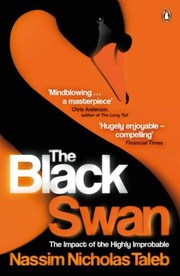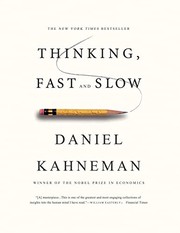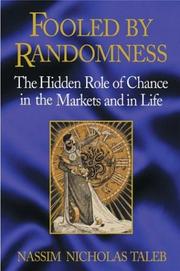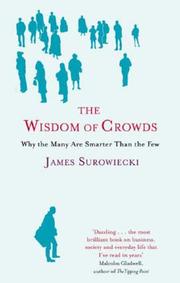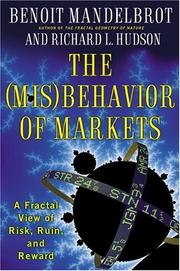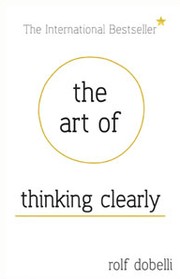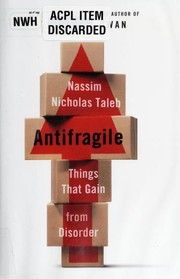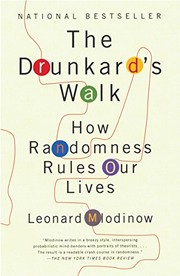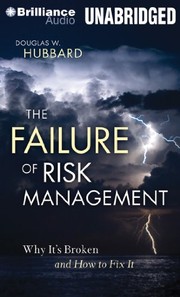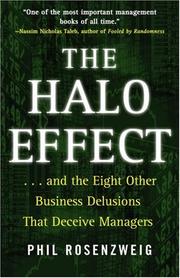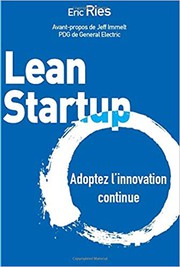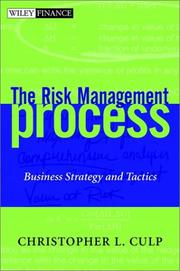Are you looking to enhance your knowledge of risk management? Look no further! We’ve compiled a list of the 20 best books about risk management that will provide you with valuable insights and strategies to navigate the complexities of risk in various industries. Whether you’re a beginner or an experienced professional, these books on risk management are essential additions to your reading list. Get ready to dive into the world of risk management and elevate your expertise with these top-notch recommendations.
Contents
- 1 20 Best Books About Risk Management
- 2 The Black Swan: The Impact of the Highly Improbable
- 3 Against the Gods: The Remarkable Story of Risk
- 4 Thinking, Fast and Slow
- 5 The Signal and the Noise: Why So Many Predictions Fail – But Some Don’t
- 6 Skin in the Game: Hidden Asymmetries in Daily Life
- 7 Fooled by Randomness: The Hidden Role of Chance in Life and in the Markets
- 8 The Big Short: Inside the Doomsday Machine
- 9 Superforecasting: The Art and Science of Prediction
- 10 The Undoing Project: A Friendship That Changed Our Minds
- 11 The Innovator’s Dilemma: When New Technologies Cause Great Firms to Fail
- 12 The Wisdom of Crowds
- 13 The (Mis)Behavior of Markets: A Fractal View of Risk, Ruin, and Reward
- 14 The Art of Thinking Clearly
- 15 Antifragile: Things That Gain from Disorder
- 16 The Drunkard’s Walk: How Randomness Rules Our Lives
- 17 The Theory That Would Not Die: How Bayes’ Rule Cracked the Enigma Code, Hunted Down Russian Submarines, and Emerged Triumphant from Two Centuries of Controversy
- 18 The Failure of Risk Management: Why It’s Broken and How to Fix It
- 19 The Halo Effect: … and the Eight Other Business Delusions That Deceive Managers
- 20 The Lean Startup: How Today’s Entrepreneurs Use Continuous Innovation to Create Radically Successful Businesses
- 21 The Risk Management Process: Business Strategy and Tactics
- 22 Conclusion
- 23
- 24 Unveiling the Best Mind Control Books in this 2024 Update
- 25 Unveiling the Best Slave Trade Books in this 2024 Update
- 26 Books about Drug Abuse: 2024's Best Titles
20 Best Books About Risk Management
The Black Swan: The Impact of the Highly Improbable
by Nassim Nicholas Taleb
The Black Swan by Nassim Nicholas Taleb is a fascinating exploration of the impact of highly improbable events on our world. In this thought-provoking book on risk management, Taleb introduces the concept of “black swan” events, which are rare and unpredictable occurrences that have a profound impact. Through a blend of philosophy, statistics, and real-world examples, Taleb challenges the traditional notions of risk management and highlights the limitations of human knowledge and prediction. He argues that these black swan events are not only unpredictable but also have a massive impact on our lives, economies, and history. With its engaging style and insightful analysis, this book about risk management is a must-read for anyone interested in understanding the complexities of uncertainty and probability in our world.
Against the Gods: The Remarkable Story of Risk
by Peter L. Bernstein
Against the Gods: The Remarkable Story of Risk by Peter L. Bernstein is a captivating exploration of the history and significance of risk in human society. This groundbreaking book delves into the evolution of risk management, from its origins in ancient times to its modern-day applications in finance and business. Bernstein’s engaging narrative takes readers on a journey through the pivotal moments and individuals who have shaped our understanding of risk, offering valuable insights into the role of uncertainty in decision-making. With its thought-provoking analysis and compelling storytelling, this book about risk management is a must-read for anyone interested in the intersection of economics, psychology, and probability. Against the Gods is a timeless classic that continues to inspire and inform readers about the complex and ever-present nature of risk.
Thinking, Fast and Slow
by Daniel Kahneman
Thinking, Fast and Slow by Daniel Kahneman is a fascinating exploration of the two systems that drive the way we think: the fast, intuitive, and emotional System 1, and the slow, deliberate, and logical System 2. Kahneman, a Nobel Prize-winning psychologist, delves into the cognitive biases and errors that affect our decision-making processes, shedding light on how we make choices and judgments. This insightful book tackles various topics including behavioral economics, decision-making, and the psychology of risk, making it a must-read for anyone interested in understanding the complexities of human thinking. Whether you’re a psychology enthusiast, a business professional, or simply curious about the workings of the mind, this book provides valuable insights into the mechanisms behind our thought processes and is a great resource for anyone looking to delve deeper into the world of decision-making and risk management.
The Signal and the Noise: Why So Many Predictions Fail – But Some Don’t
by Nate Silver
The Signal and the Noise by Nate Silver is a compelling book on risk management that explores why so many predictions fail and how some succeed. Silver, a renowned statistician and founder of FiveThirtyEight, delves into the world of forecasting, examining the challenges and pitfalls of prediction in various fields, from economics and politics to sports and weather. He discusses the concept of “signal” (useful information) versus “noise” (irrelevant data), and how we can distinguish between the two to make more accurate predictions. Through engaging storytelling and insightful analysis, Silver provides valuable lessons on how to improve forecasting and decision-making. Whether you’re a data enthusiast or someone looking to better understand the complexities of prediction, this risk management book offers a fascinating exploration of the art and science of making predictions.
Skin in the Game: Hidden Asymmetries in Daily Life
by Nassim Nicholas Taleb
Skin in the Game: Hidden Asymmetries in Daily Life by Nassim Nicholas Taleb is a thought-provoking book about risk management. Taleb explores the concept of “skin in the game” and how it affects our daily lives, from financial decisions to personal relationships. He argues that people should have a stake in the outcomes of their decisions, as it encourages accountability and better decision-making. Taleb uses his expertise in finance and probability to highlight the hidden asymmetries that exist in various aspects of life, and how having “skin in the game” can help mitigate these asymmetries. This risk management book is an engaging and insightful read for anyone interested in understanding the impact of asymmetries and taking more responsibility in their decision-making processes.
Fooled by Randomness: The Hidden Role of Chance in Life and in the Markets
by Nassim Nicholas Taleb
Fooled by Randomness by Nassim Nicholas Taleb is a compelling book about the impact of chance on our lives and financial markets. Taleb, a former trader and risk management expert, explores the hidden role of randomness in shaping our successes and failures. Through thought-provoking examples and stories, he challenges the conventional wisdom and delves into the ways we often underestimate the influence of luck and randomness in our decision-making. This book on risk management offers valuable insights into how unpredictable events and luck can affect our lives and investments. Taleb’s unique perspective and engaging writing style make this a must-read for anyone interested in understanding the true nature of risk and uncertainty.
The Big Short: Inside the Doomsday Machine
by Michael Lewis
The Big Short: Inside the Doomsday Machine by Michael Lewis is a captivating exposé of the financial crisis of 2008. Lewis delves into the world of high finance and exposes the greed, ignorance, and recklessness that led to the collapse of the housing market and the global economy. Through the stories of a handful of quirky and brilliant investors who saw the impending disaster and bet against the market, Lewis unravels the complex web of toxic mortgages, collateralized debt obligations, and credit default swaps. This book on risk management is a riveting and eye-opening account of the financial industry’s systematic failure and the individuals who profited from it. The Big Short is a must-read for anyone looking to understand the intricacies of the financial crisis and its impact on the global economy.
Superforecasting: The Art and Science of Prediction
by Philip E. Tetlock and Dan Gardner
Superforecasting: The Art and Science of Prediction, authored by Philip E. Tetlock and Dan Gardner, is a fascinating book on risk management that delves into the world of forecasting and prediction. The book explores the methods and practices of ‘superforecasters’—individuals who have demonstrated an exceptional ability to accurately predict future events. Tetlock and Gardner provide valuable insights into the cognitive processes, analytical techniques, and behavioral traits that contribute to superior forecasting abilities. By studying the successes and failures of forecasters, the authors offer practical strategies for improving one’s own predictive skills. Superforecasting is a thought-provoking and insightful read that challenges conventional assumptions about forecasting and offers valuable lessons for anyone interested in enhancing their decision-making and risk assessment abilities.
The Undoing Project: A Friendship That Changed Our Minds
by Michael Lewis
The Undoing Project: A Friendship That Changed Our Minds by Michael Lewis is a captivating exploration of the groundbreaking work of psychologists Daniel Kahneman and Amos Tversky. This compelling book delves into their collaborative research that revolutionized the way we understand decision-making and human behavior. Through their pioneering work, Kahneman and Tversky uncovered the cognitive biases and heuristics that influence our choices, shedding light on the complexities of the human mind. With Lewis’ characteristic storytelling prowess, The Undoing Project offers a fascinating glimpse into the world of behavioral economics and the profound impact of Kahneman and Tversky’s work on fields such as finance, medicine, and public policy. This thought-provoking narrative is a must-read for anyone interested in psychology, decision-making, and the intricacies of the human psyche.
The Innovator’s Dilemma: When New Technologies Cause Great Firms to Fail
by Clayton M. Christensen
The Innovator’s Dilemma by Clayton M. Christensen is a groundbreaking book on risk management that explores the challenges faced by successful companies when disruptive technologies emerge. Christensen argues that well-managed firms often fail to adapt to these innovations because they are too focused on sustaining their current business models. He presents compelling case studies to illustrate how established companies can become vulnerable to disruption, and provides strategies for navigating these challenges. The book offers valuable insights for business leaders and entrepreneurs, urging them to embrace innovation and remain adaptable in the face of technological change. With its thought-provoking analysis and practical advice, The Innovator’s Dilemma is a must-read for anyone interested in understanding the dynamics of corporate success and failure in the ever-evolving business landscape.
The Wisdom of Crowds
by James Surowiecki
The Wisdom of Crowds by James Surowiecki explores the concept of collective intelligence and how diverse groups of people can outperform individual experts when it comes to making decisions. Surowiecki delves into various real-life examples, from stock market predictions to the success of open-source software, to illustrate how the aggregated opinions of a large and diverse group can lead to remarkably accurate outcomes. This thought-provoking book challenges traditional notions of decision-making and offers insights into harnessing the power of collective wisdom. Whether you’re interested in psychology, economics, or simply curious about the dynamics of group behavior, this book on risk management is a fascinating exploration of the potential of crowds to make better decisions than even the smartest individuals.
The (Mis)Behavior of Markets: A Fractal View of Risk, Ruin, and Reward
by Benoit Mandelbrot and Richard L. Hudson
The (Mis)Behavior of Markets: A Fractal View of Risk, Ruin, and Reward is a groundbreaking book on risk management written by Benoit Mandelbrot and Richard L. Hudson. Mandelbrot, a mathematician, challenges the traditional theories of finance by introducing the concept of fractals and their application to the financial markets. The authors argue that the standard models of risk management are inadequate and fail to capture the true complexity and unpredictability of the market. Through engaging anecdotes and insightful analysis, they demonstrate how markets exhibit erratic behavior and are prone to extreme events that defy conventional statistical methods. This thought-provoking book about risk management is a must-read for anyone seeking a deeper understanding of the dynamics of financial markets and the implications for risk management.
The Art of Thinking Clearly
by Rolf Dobelli
The Art of Thinking Clearly by Rolf Dobelli is a thought-provoking book on risk management that explores the common cognitive errors that affect decision-making. Dobelli draws on psychological research and real-life examples to uncover the unconscious biases and logical fallacies that lead to poor judgments. From the ‘sunk cost fallacy’ to the ‘confirmation bias,’ the book offers practical insights into how to avoid these pitfalls and make more rational choices. Dobelli’s clear and engaging writing style makes complex concepts accessible to readers, making this risk management book a valuable resource for anyone seeking to improve their decision-making abilities. Whether you’re a business leader, investor, or simply interested in understanding the workings of the human mind, The Art of Thinking Clearly provides a fascinating and enlightening exploration of the ways we can enhance our thinking processes.
Antifragile: Things That Gain from Disorder
by Nassim Nicholas Taleb
Antifragile: Things That Gain from Disorder by Nassim Nicholas Taleb is a captivating exploration of the concept of antifragility, which refers to systems or entities that thrive and improve from stress, volatility, and uncertainty. Taleb challenges the traditional approach to risk management, arguing that instead of seeking stability and predictability, we should embrace and even benefit from chaos and randomness. Through engaging anecdotes and thought-provoking insights, Taleb presents a compelling case for embracing uncertainty and using it to our advantage. This book is not just a book on risk management; it is a groundbreaking manifesto that will change the way you perceive and navigate the world. Whether you’re a business leader, investor, or simply curious about the nature of resilience, Antifragile offers valuable lessons and perspectives on how to thrive in an unpredictable world.
The Drunkard’s Walk: How Randomness Rules Our Lives
by Leonard Mlodinow
The Drunkard’s Walk: How Randomness Rules Our Lives by Leonard Mlodinow is a fascinating exploration of the role that randomness plays in our lives. Through engaging anecdotes and accessible explanations, Mlodinow delves into the world of probability and chance, showing how unpredictable events can shape our decisions and outcomes. This thought-provoking book on risk management challenges the notion of control and certainty, highlighting the ways in which randomness influences our daily lives, from career success to financial markets. With a blend of science and storytelling, Mlodinow encourages readers to embrace uncertainty and make informed decisions in the face of randomness. Whether you’re a risk management professional or simply curious about the forces at play in the world, The Drunkard’s Walk offers valuable insights into the unpredictable nature of life.
The Theory That Would Not Die: How Bayes’ Rule Cracked the Enigma Code, Hunted Down Russian Submarines, and Emerged Triumphant from Two Centuries of Controversy
by Sharon Bertsch McGrayne
The Theory That Would Not Die by Sharon Bertsch McGrayne is a captivating exploration of the history and impact of Bayes’ rule, a fundamental concept in probability theory. This book delves into the controversial and triumphant journey of Bayes’ rule, from its initial development in the 18th century to its pivotal role in cracking the Enigma code during World War II and tracking down Russian submarines during the Cold War. McGrayne skillfully weaves together historical anecdotes, scientific breakthroughs, and real-world applications to showcase the enduring power of Bayes’ rule. Whether you’re a mathematician, a history buff, or simply curious about the intersection of probability and risk management, this book offers a fascinating and enlightening read that will leave you with a deeper appreciation for the impact of this groundbreaking theory.
The Failure of Risk Management: Why It’s Broken and How to Fix It
by Douglas W. Hubbard
The Failure of Risk Management: Why It’s Broken and How to Fix It by Douglas W. Hubbard is a thought-provoking book on risk management that challenges the conventional approach to assessing and managing risk. Hubbard argues that traditional risk management methods are flawed and offers a new perspective on how to accurately measure and mitigate risk. Drawing on real-world examples and case studies, he provides practical solutions for improving risk management practices. This book about risk management is a must-read for anyone involved in decision-making processes within organizations, as it offers valuable insights into the shortcomings of current risk management strategies and presents a compelling argument for a more effective approach. Whether you’re a business leader, risk manager, or simply interested in understanding how to better navigate uncertainty, this risk management book will challenge your assumptions and provide a fresh perspective on managing risk.
The Halo Effect: … and the Eight Other Business Delusions That Deceive Managers
by Phil Rosenzweig
The Halo Effect: … and the Eight Other Business Delusions That Deceive Managers by Phil Rosenzweig is a thought-provoking book on risk management that challenges popular management myths. Rosenzweig delves into the concept of the “halo effect,” where successful companies are often praised for their every decision, despite their faults. The book exposes how this bias can deceive managers into making flawed decisions and misinterpreting performance. With a blend of research, case studies, and real-world examples, Rosenzweig uncovers the delusions that lead to poor risk management practices. This book about risk management is a must-read for managers, leaders, and anyone interested in understanding the complexities of business success and the dangers of falling into the traps of misleading beliefs.
The Lean Startup: How Today’s Entrepreneurs Use Continuous Innovation to Create Radically Successful Businesses
by Eric Ries
The Lean Startup by Eric Ries is a groundbreaking book on risk management that challenges traditional business practices. Ries introduces the concept of continuous innovation, urging entrepreneurs to test their vision continuously, adapt, and adjust based on customer feedback. The book offers practical advice on how to build a successful business by using lean principles, focusing on creating a minimum viable product, and implementing a build-measure-learn feedback loop. Ries shares real-life examples and case studies to illustrate the effectiveness of lean startup methodologies, making it an invaluable resource for aspiring and established entrepreneurs. The Lean Startup is a must-read for anyone looking to create a radically successful business by embracing agility, experimentation, and customer-centricity.
The Risk Management Process: Business Strategy and Tactics
by Christopher L. Culp
The Risk Management Process: Business Strategy and Tactics by Christopher L. Culp is a comprehensive book on risk management that provides an in-depth understanding of the complexities and challenges that businesses face in today’s dynamic environment. Culp offers practical insights and strategies for effectively managing risks, making this book a valuable resource for business leaders, managers, and professionals in the finance and investment industry. With a focus on both theory and practical application, the book covers a wide range of topics including financial risk, operational risk, and strategic risk management. Culp’s expertise and real-world examples make this book about risk management a must-read for anyone looking to enhance their risk management skills and knowledge.
Conclusion
Managing risk is essential for any organization, and there are numerous books about Risk Management that offer valuable insights and strategies. Whether you’re a business leader, project manager, or risk management professional, these books provide practical guidance and real-world examples to help you navigate and mitigate risks effectively. By delving into the 20 best books about risk management, you can gain a deeper understanding of risk and enhance your ability to make informed decisions. From financial risk to operational risk, these books cover a wide range of topics, making them indispensable resources for anyone seeking to master the art of risk management.
Which Risk Management book is best?
The best book on Risk Management can vary with personal preference, but three widely recommended titles are:
- The Black Swan: The Impact of the Highly Improbable by Nassim Nicholas Taleb,
- Against the Gods: The Remarkable Story of Risk by Peter L. Bernstein,
- Thinking, Fast and Slow by Daniel Kahneman.
Each offers valuable insights and could be a great starting point.
What are the best books to learn about Risk Management?
For those looking to learn about Risk Management, there is a wealth of literature that can provide a comprehensive understanding of the subject. Some of the most highly recommended books include:
- The Black Swan: The Impact of the Highly Improbable by Nassim Nicholas Taleb,
- Against the Gods: The Remarkable Story of Risk by Peter L. Bernstein,
- Thinking, Fast and Slow by Daniel Kahneman,
- The Signal and the Noise: Why So Many Predictions Fail – But Some Don’t by Nate Silver,
- Skin in the Game: Hidden Asymmetries in Daily Life by Nassim Nicholas Taleb,
- Fooled by Randomness: The Hidden Role of Chance in Life and in the Markets by Nassim Nicholas Taleb,
- The Big Short: Inside the Doomsday Machine by Michael Lewis,
- Superforecasting: The Art and Science of Prediction by Philip E. Tetlock and Dan Gardner,
- The Undoing Project: A Friendship That Changed Our Minds by Michael Lewis,
- The Innovator’s Dilemma: When New Technologies Cause Great Firms to Fail by Clayton M. Christensen
These books offer a range of perspectives on Risk Management, covering various aspects and approaches to the subject.
What are the best books on Risk Management?
The best books on Risk Management include:
- The Black Swan: The Impact of the Highly Improbable by Nassim Nicholas Taleb,
- Against the Gods: The Remarkable Story of Risk by Peter L. Bernstein,
- The Wisdom of Crowds by James Surowiecki,
- The (Mis)Behavior of Markets: A Fractal View of Risk, Ruin, and Reward by Benoit Mandelbrot and Richard L. Hudson,
- Superforecasting: The Art and Science of Prediction by Philip E. Tetlock and Dan Gardner,
- Fooled by Randomness: The Hidden Role of Chance in Life and in the Markets by Nassim Nicholas Taleb.
Each offers unique insights into the subject. While these books on the topic of Risk Management are highly regarded, it’s important to note that any list of ‘best’ books is subjective and reflects a range of opinions.
What are the best Risk Management books of all time?
Choosing the best Risk Management books of all time can vary depending on who you ask, but seven titles that are often celebrated include
- The Black Swan: The Impact of the Highly Improbable by Nassim Nicholas Taleb,
- Against the Gods: The Remarkable Story of Risk by Peter L. Bernstein,
- Skin in the Game: Hidden Asymmetries in Daily Life by Nassim Nicholas Taleb,
- Superforecasting: The Art and Science of Prediction by Philip E. Tetlock and Dan Gardner,
- The Innovator’s Dilemma: When New Technologies Cause Great Firms to Fail by Clayton M. Christensen,
- The (Mis)Behavior of Markets: A Fractal View of Risk, Ruin, and Reward by Benoit Mandelbrot and Richard L. Hudson,
- and The Wisdom of Crowds by James Surowiecki.
Each of these books has made a significant impact in the field of Risk Management and continues to be influential today.

